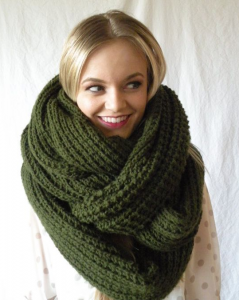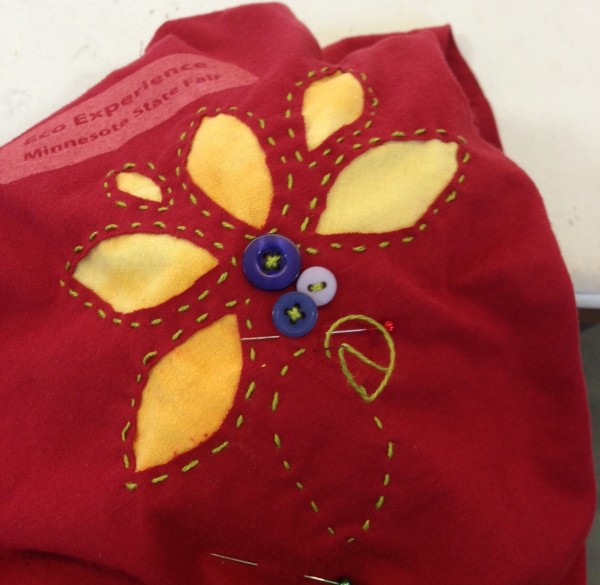I have bad luck with sewing machines. Or maybe that should be recently I have had bad luck with sewing machines. I sew a lot. As with most tools, I really think that you and your machine need to have a relationship. There is no one “perfect machine” and there isn’t one you can call the “best”. But there are machines that work better for each person than others. I am the same way with computers. I name them so I can talk to them and they can learn to behave themselves. (This machine right now that I am typing on is named Carson.) But my recent sewing machines and I have not had very good relationships.
The very first machine I learned to use was my mom’s 197X Singer that she bought from the Family Thrift grocery store. It is a solid tank of a machine. I sewed painted theater curtains and costumes and who knows what else on that lovely machine. It isn’t pretty, but it was a workhorse. They don’t make Singers like this anymore.
When I was 17 and had my very first paycheck from my very first summer job, I bought myself a Bicor VX1005. This beautiful girl was $100 from Walmart and has been the single only consistently running machine I have had for 20+ years. To this day, when the others croak she is always there and ready to go. Bicor was made by Brother and I will always love Brother because of this machine. Her strength is mostly with straight stitch. Tension is always beautiful, stitches are even. She does not do a good job with chiffon or anything too thin and the zipper foot is mediocre, but I can hem and do basic stitching all day. I made my prom dress and my wedding dress on this machine.

After I started doing costuming and teaching sewing, I bought a new fancy machine to replace this one and give myself some more bells and whistles. That was a Babylock Quilters Choice. At the time these machines were made by Brother. So I was really excited to get this upgrade to my little basic Bicor machine. This one is affectionately called “The Lemon”. It is a super cool machine and I paid a lot for it. Fancy buttonholes, alphabets, thread cutter. And it did sew beautifully. It ends up that it has a software problem. The software problem gradually lets the timing get out of synch and then suddenly your needle goes through the bobbin case with a big ga-smash and you have to have a $100 repair. After several times of hauling it in for this repair, I started to see the same story appear on blogs and learned that it’s not just me, it’s a design flaw. It self destructs. So this one sits in my studio and collects dust. I can’t sell it or give it to anyone in good conscience because I know it is a ticking time bomb. Sigh.

I then had a brief affair with a 1952 Singer, which is lovely but only does straight stitch and nothing else. Not quite enough, but a great old machine when I need it.
I auditioned a lot of machines in the meantime. I read reviews, I stitched on things and I asked everyone I knew what they loved. I tried friend’s machines. And then I bought a Viking Emerald. Which now belongs to my sister. (And by the way, B, I found the owner’s manual, which I will send to you!)

I was so fed up with the computer system, that I went for a full-on manual machine. It is basic, solid, sturdy, it works great and the price was right. My only complaint with this one is that it was too basic for the kind of sewing I wanted to do and I had gotten spoiled with the Lemon. I had outgrown this machine (which I didn’t realize) before I even bought it.
So I passed that along to my sister and went shopping again. This time, I listened to what everyone else told me and bought a Bernina Activa 230. Many people had owned multiple Berninas and loved them. This one was on sale and it seemed like it was just what I needed and so many people loved Berninas.

This machine was the biggest disappointment of the bunch. I hate the Bernina. I had it for 2 weeks and I was already yelling at it. The tension was finicky. It ate thread. Anything too thick threw all of the stitches and tension out of whack. The zipper foot was stupid and I couldn’t stitch a zipper to save my soul. (This is why I learned to hand pick them. Which I like better anyway.) I wanted to love it, but it’s seriously underpowered and undersized and way too picky for me. I think probably Berninas can be great machines, but I am not feeling it. This one came down with a tension issue about 2 weeks ago and I cleaned it and babied it and I have put it in time out rather than yell at it some more. I will take it in and get it repaired (I am sure it is nothing major), but it is available if anyone wants it. I have just accepted that it needs to go. We don’t get along.
(Somewhere in here while fighting with the Bernina, I bought a Brother 1034D Serger on a whim for $200 on Amazon and I love love love it. Never owned a serger before.)
So today, I bought a Pfaff. It’s an Expression 3.2 and I haven’t even unpacked it yet. Why a Pfaff? At my former job, we owned 6 basic Pfaffs and they survived 12 years and hundreds of kids sewing on them and they are STILL RUNNING. They have been banged around and abused (thread octopi in the bobbin case) and threaded incorrectly and had crummy thread used in them and buttons pushed and needles broken and although they squeak and rattle, they still stitch beautifully. I scoffed at them when I first saw them 12+ years ago. They were pretty basic. They thread kind of funny. The bobbin winder didn’t really work after a while. But the more I thought about my own sewing machine saga, the more I thought I just needed a machine that just worked. Like those Pfaffs. No matter what you do to them. We gave them all names during summer camp this year to help them get through the summer. We figured if they had names we could keep track of their issues better (they are getting pretty elderly) and they would feel loved. So we (the teachers) named them after our grandmothers and the ladies who taught us to sew: Helen, Muriel, Ruth, Grace, Nancy and Barb. Good karma.
So I bought one that is a couple of steps up from those student machines and I can’t even tell you about it because I have only stitched 8 inches on it so far. It has plenty of bells and whistles. Pfaff makes this built in walking foot gizmo that I just think is brilliant (our student machines had it) and they have the best zipper foot ever. (Trust me. You teach a class full of 9 year olds how to put in zippers with just any zipper foot and you will see.) So I am hopeful.
Edited to add: I know that this is a really popular post that gets a lot of views, so I wanted to post a follow up. I love the Pfaff. Wouldn’t trade it for the world.)
In order to have really good karma, I am taking nominations to name this machine. (My dress form is named Dolores. My computer is Hippolyta. I named the Bernina “Scarlett” because it made me say Damn! a lot.)
I want your best name suggestions. Let’s make sure she feels welcome.



















